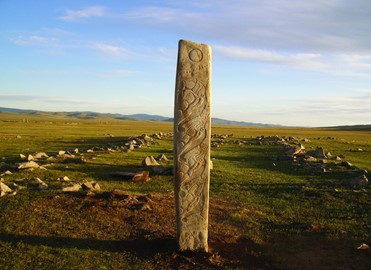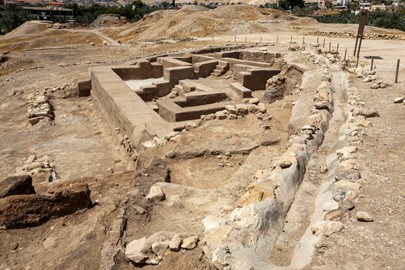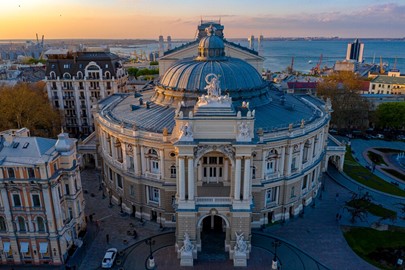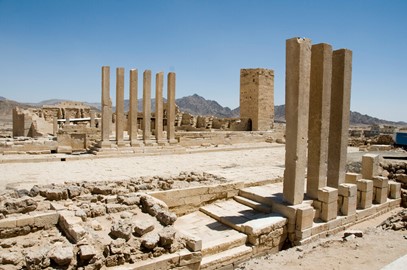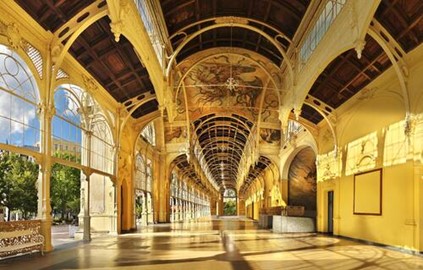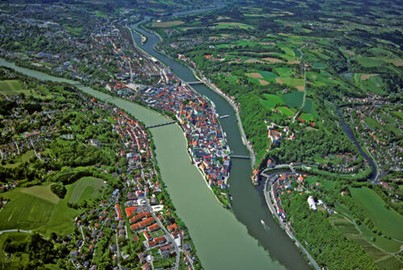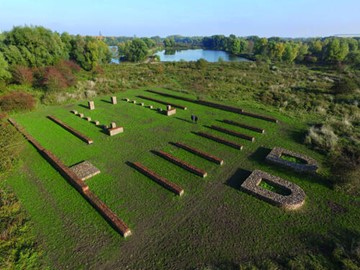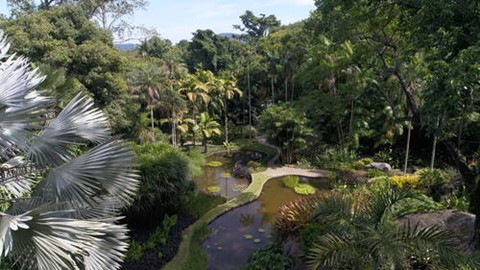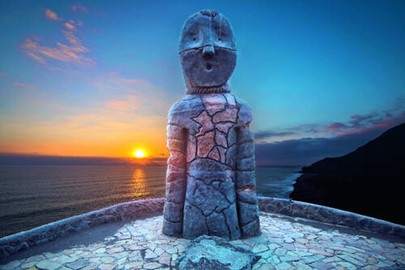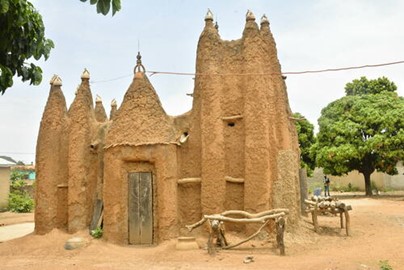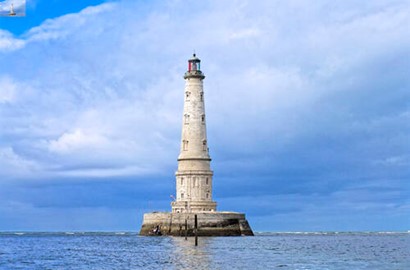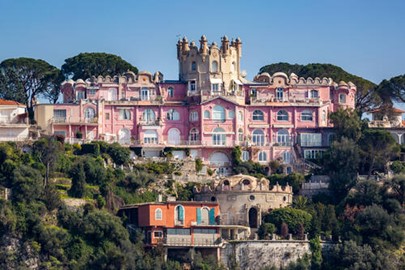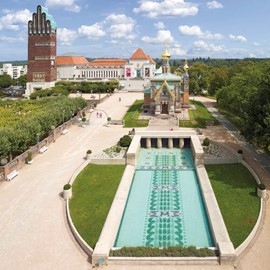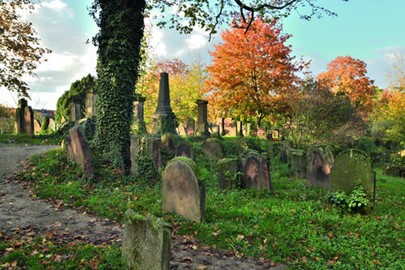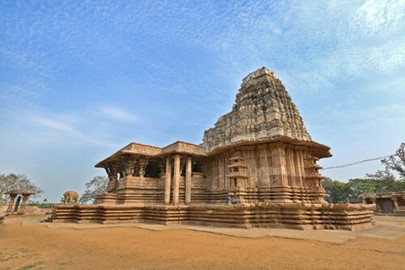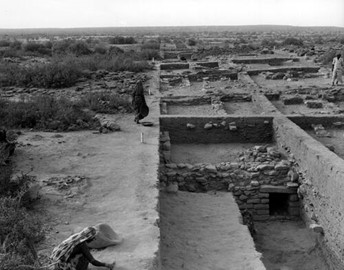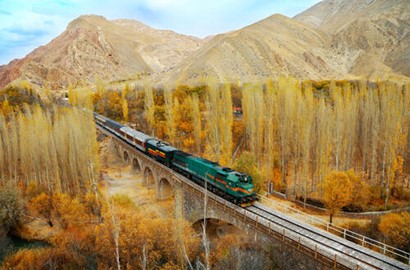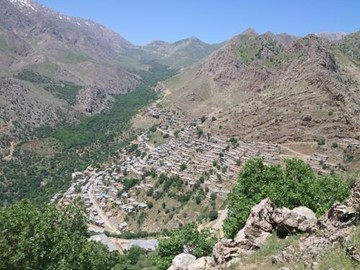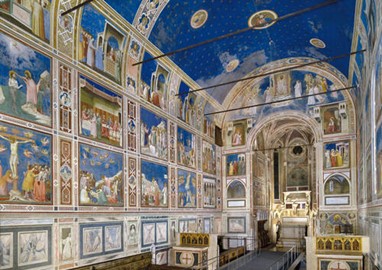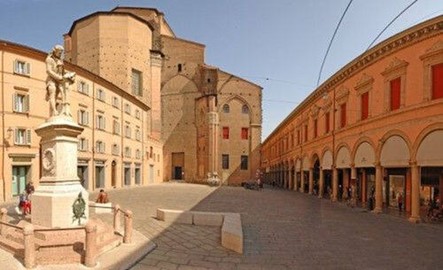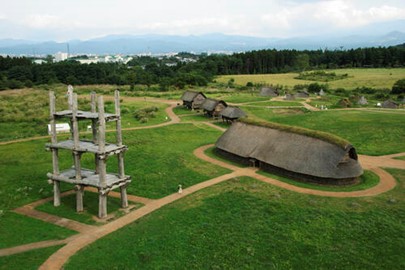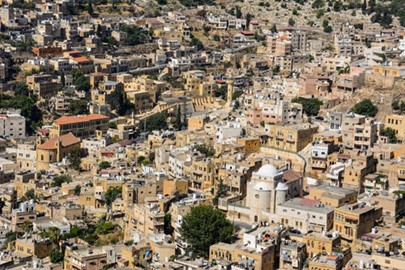category :: cultural
Deer Stone Monuments
The Deer Stone Monuments, a UNESCO World Heritage site in Mongolia, are ancient megaliths scattered across the northern steppes, dating from 1200 to 600 BCE. Recognized in 2023, these 1- to 4-meter-tall stones, adorned with stylized deer carvings, are part of Bronze Age complexes in the Khangai Ridge, including burial mounds (khirgisuurs) and sacrificial altars. Found primarily at sites like Uushigiin Övör and Khoid Tamir, they reflect the ceremonial and funerary practices of Eurasian nomads, offering a uni... Read More
Gaya Tumuli
The Gaya Tumuli, a UNESCO World Heritage site in South Korea, comprises seven clusters of ancient burial mounds across Gyeongsang Province, dating from the 1st to 6th centuries CE during the Gaya Confederacy. Recognized in 2023, these 35- to 65-meter-wide tumuli, built for elite rulers, feature stone-lined chambers and artifacts like gold jewelry and armor, reflecting Gaya’s sophisticated culture and trade networks. Set in urban and rural landscapes, they illustrate a distinct funerary tradition on the Kore... Read More
Jericho
Jericho, a UNESCO World Heritage site in Israel, is one of the world’s oldest continuously inhabited cities, with archaeological remains dating back to 9600 BCE. Recognized in 2023 as 'Tell es-Sultan,' this 9-hectare site in the Jordan Valley features a prehistoric tell with evidence of the first sedentary Jewish communities, including a monumental stone tower and mudbrick walls from the Pre-Pottery Neolithic period. Its fertile oasis setting and ancient ruins highlight Jericho’s pivotal role in the transit... Read More
Odesa
Odesa, a UNESCO World Heritage site in Ukraine, is a historic port city on the Black Sea, recognized in 2023 and listed as World Heritage in Danger due to ongoing conflict. Its 19th-century urban core, spanning 66 hectares, features a planned grid with neoclassical and eclectic architecture, reflecting its rapid growth as a cosmopolitan trade hub under Russian imperial rule. Key landmarks like the Odesa Opera House and Primorsky Boulevard highlight its multicultural heritage, blending Russian, Jewish, Greek... Read More
Ancient Kingdom of Saba
The Ancient Kingdom of Saba, a UNESCO World Heritage site in Yemen’s Marib region, is a collection of seven archaeological sites showcasing the wealthy Sabaean civilization from the 1st millennium BCE to around 630 CE. Recognized in 2023 and listed as World Heritage in Danger due to ongoing conflict, it features monumental temples, ramparts, and the remarkable Ma’rib Dam—an ancient engineering feat that created the largest man-made oasis in South Arabia. Situated in a semi-arid landscape, these remnants hig... Read More
Great Spa Towns of Europe
The Great Spa Towns of Europe, a UNESCO World Heritage site, encompass 11 historic spa towns across seven countries—Austria, Belgium, Czechia, France, Germany, Italy, and the UK—recognized in 2021 for their shared cultural legacy from the 18th to early 20th centuries. These towns, including Bath, Baden-Baden, and Karlovy Vary, feature elegant architecture, landscaped parks, and mineral springs, developed as therapeutic retreats for Europe’s elite. Reflecting the rise of balneotherapy and leisure culture, th... Read More
Danube Limes
The Danube Limes, a UNESCO World Heritage site in Europe, is a section of the Roman Empire’s northern frontier along the Danube River, recognized in 2021 across Austria, Germany, and Slovakia. Spanning 493 kilometers, it includes 77 sites—fortresses, watchtowers, and settlements like Carnuntum and Regensburg—built between the 1st and 5th centuries CE to defend against Germanic tribes. This well-preserved network of military architecture and infrastructure highlights Roman engineering and urban planning, off... Read More
Colonies of Benevolence
The Colonies of Benevolence, a UNESCO World Heritage site spanning Belgium and the Netherlands, consist of four agricultural settlements—Frederiksoord, Wilhelminaoord, Wortel, and Veenhuizen—established in the early 19th century. Recognized in 2021, these planned communities were founded by the Society of Benevolence to alleviate poverty through farming and self-sufficiency, featuring orderly layouts with worker cottages, schools, and fields. Covering 4,571 hectares, they reflect an innovative social experi... Read More
Lower German Limes
The Lower German Limes, a UNESCO World Heritage site spanning Germany and the Netherlands, is a 400-kilometer stretch of the Roman Empire’s northern frontier along the Lower Rhine, recognized in 2021. Comprising 102 sites—including forts, harbors, and civilian settlements like Xanten and Nijmegen—it was constructed between the 1st and 5th centuries CE to secure the empire’s northwest border. This well-preserved archaeological ensemble showcases Roman military engineering, river-based infrastructure, and urb... Read More
Sítio Roberto Burle Marx
The Sítio Roberto Burle Marx, a UNESCO World Heritage site in Brazil, is a 40-hectare estate in Rio de Janeiro’s Barra de Guaratiba, recognized in 2021 as a cultural landscape. Created by landscape architect Roberto Burle Marx from 1949 until his death in 1994, it features modernist gardens with over 3,500 tropical plant species and seven structures, including his home and studio. Donated to Brazil in 1985 and managed by IPHAN, this site exemplifies his innovative tropical design, merging art, nature, and c... Read More
Chinchorro Culture
The Chinchorro Culture, a UNESCO World Heritage site in Chile’s Arica and Parinacota Region, recognized in 2021, preserves the world’s oldest known artificial mummification practices, dating back over 7,000 years. This coastal hunter-gatherer society thrived in the Atacama Desert, leaving behind three key sites—Faldeos del Morro, Colón 10, and Camarones—featuring cemeteries with naturally and artificially mummified bodies. These sites reflect the Chinchorro’s complex spirituality and adaptation to an arid e... Read More
Quanzhou
Quanzhou: Emporium of the World in Song-Yuan China, a UNESCO World Heritage site in Fujian Province, recognized in 2021, is a historic port city that thrived as a global trade hub from the 10th to 14th centuries during the Song and Yuan dynasties. Spanning 22 sites—including docks, pagodas, mosques, and archaeological remains—it showcases maritime infrastructure and a multicultural legacy blending Chinese, Islamic, and Hindu influences. This 540-hectare area highlights Quanzhou’s pivotal role in the Maritim... Read More
Sudanese Style Mosques
The Sudanese Style Mosques, a UNESCO World Heritage site in Côte d'Ivoire, recognized in 2021, are eight small adobe mosques in the northern towns of Tengréla, Kouto, Sorobango, Samatiguila, Nambira, Kong, and Kaouara. Dating from the 17th to 19th centuries, they feature earthen construction with projecting timbers, buttresses topped with pottery or ostrich eggs, and tapered minarets, reflecting a Sudano-Sahelian style that originated in 14th-century Djenné, Mali. These well-preserved structures, born from ... Read More
Cordouan Lighthouse
The Cordouan Lighthouse, a UNESCO World Heritage site in France, recognized in 2021, stands at the Gironde Estuary’s entrance off the Atlantic coast, built between 1584 and 1611 with later enhancements. Known as the 'Versailles of the Sea,' this 67.5-meter limestone tower blends Renaissance elegance with maritime function, featuring ornate interiors, a chapel, and advanced engineering for its time. Still operational, it symbolizes centuries of navigational innovation and French architectural mastery, servin... Read More
Nice
Nice, Winter Resort Town of the Riviera, a UNESCO World Heritage site in France, recognized in 2021, is a 522-hectare urban area on the French Riviera celebrated for its evolution as a winter retreat from the 18th to early 20th centuries. Its Mediterranean climate and cosmopolitan charm drew European aristocracy, shaping a distinctive cityscape with pastel villas, grand hotels, and the iconic Promenade des Anglais. Blending French, Italian, and British architectural influences, Nice reflects a pioneering mo... Read More
Mathildenhohe Darmstadt
Mathildenhöhe Darmstadt, a UNESCO World Heritage site in Germany, recognized in 2021, is an artists’ colony in Darmstadt founded in 1899 by Grand Duke Ernst Ludwig to foster modern design. This hilltop enclave features Jugendstil (Art Nouveau) architecture, including the Wedding Tower and Exhibition Hall by Joseph Maria Olbrich, blending art, craft, and urban planning. A hub for the Darmstadt Artists’ Colony until 1914, it reflects an influential early 20th-century experiment in cultural innovation, showcas... Read More
ShUM Sites of Speyer, Worms and Mainz
The ShUM Sites of Speyer, Worms, and Mainz, a UNESCO World Heritage site in Germany, recognized in 2021, preserve medieval Jewish heritage in three Rhineland cities pivotal to Ashkenazi culture from the 11th to 14th centuries. Named for their Hebrew initials (Speyer, Worms, Mainz), these sites include synagogues, mikvehs, and cemeteries, such as Speyer’s 12th-century ritual bath and Worms’ ancient Jewish quarter. They reflect the intellectual, religious, and architectural contributions of Jewish communities... Read More
Ramappa Temple
The Ramappa Temple, a UNESCO World Heritage site in India, recognized in 2021, is a 13th-century sandstone shrine in Telangana dedicated to Lord Shiva, built under the Kakatiya dynasty. Known officially as Rudreswara Temple, it features intricate carvings, floating bricks, and a star-shaped sanctum, showcasing advanced medieval engineering and artistic mastery. Named after its architect, Ramappa, this well-preserved structure exemplifies South Indian temple architecture, reflecting the Kakatiya era’s cultur... Read More
Dholavira
Dholavira: a Harappan City, a UNESCO World Heritage site in India, recognized in 2021, is an ancient urban settlement in Gujarat from the Harappan Civilization, thriving between 3000 and 1500 BCE. This well-preserved archaeological site features sophisticated water management systems, a fortified citadel, and large-scale structures, reflecting advanced urban planning and engineering. One of the five largest Indus Valley cities, Dholavira offers a rare glimpse into Bronze Age life, trade, and culture in the ... Read More
Trans Iranian Railway
The Trans-Iranian Railway, a UNESCO World Heritage site in Iran, recognized in 2021, is a historic rail network completed in 1938 under Reza Shah, linking the Persian Gulf to the Caspian Sea. Spanning diverse terrains—mountains, deserts, and valleys—it features over 174 bridges, 186 tunnels, and bold engineering feats like the Three Golden Lines spiral. Built to boost trade and modernization, this 20th-century marvel reflects Iran’s industrial ambition and technical prowess, connecting remote regions while ... Read More
Hawraman/Uramanat
Hawraman/Uramanat, a UNESCO World Heritage site in Iran, recognized in 2021, is a rugged mountainous region in western Iran preserving the ancient cultural landscape of the Kurdish Hawrami people. Featuring terraced villages, dry-stone architecture, and sacred sites dating back over 3,000 years, it reflects a harmonious blend of human adaptation, agriculture, and pastoralism in a harsh environment. This living heritage, with its unique traditions and stepped settlements, showcases Iran’s diverse cultural id... Read More
Padua’s Frescos
Padua’s Fourteenth-Century Fresco Cycles, a UNESCO World Heritage site in Italy, recognized in 2021, are a collection of vibrant wall paintings in eight buildings, including the Scrovegni Chapel, created between 1302 and 1397. Masterworks by artists like Giotto, these frescoes revolutionized art with their naturalistic style, depth, and emotional expression, marking a turning point in Western painting. Preserved across Padua’s historic center, they reflect the city’s cultural prominence and artistic innovat... Read More
Porticoes of Bologna
The Porticoes of Bologna, a UNESCO World Heritage site in Italy, recognized in 2021, are a network of covered walkways lining Bologna’s streets, originating in the 11th century to expand living space. Built in wood, stone, and brick, these architecturally diverse structures—some spanning centuries—shelter pedestrians, enhance urban life, and reflect medieval civic planning. A defining feature of the city’s identity, they showcase Bologna’s historical role as a cultural and commercial hub, blending practical... Read More
Jomon Prehistoric Sites
The Jomon Prehistoric Sites, a UNESCO World Heritage site in Japan, recognized in 2021, are 17 archaeological locations in northern Japan showcasing the Jomon culture, a hunter-gatherer society from 13,000 to 300 BCE. Featuring settlements, burial sites, and ritual mounds like Sannai-Maruyama, these sites reveal advanced pottery, early sedentism, and spiritual practices unique to the Jomon period. Spanning millennia, they offer a rare window into Japan’s pre-agrarian past, highlighting a sophisticated lifes... Read More
As Salt
As-Salt - The Place of Tolerance and Urban Hospitality, a UNESCO World Heritage site in Jordan, recognized in 2021, is a historic hillside city in the Balqa highlands that flourished as an Ottoman trading hub from the 1860s to 1920s. Its golden limestone architecture blends European Art Nouveau and Neo-Colonial styles with local traditions, featuring notable buildings and communal spaces like guest houses (madafas). Known for its non-segregated Muslim and Christian communities, As-Salt embodies a legacy of ... Read More
